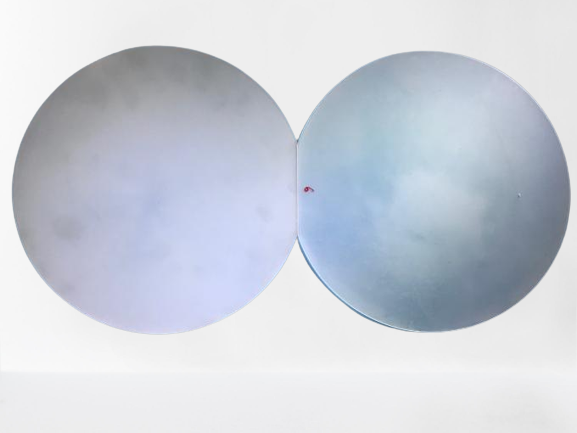EPI wafers
EPI wafers :A wafer of semiconducting material produced via epitaxial growth (epitaxy) for application in photonics, microelectronics, spintronics, or photovoltaics is known as an epitaxial wafer. The epi layer may be comprised of the same material as the substrate, commonly monocrystaline silicon, or it may be comprised of a more exotic material with desirable properties.

EPI wafers
Free Standing gan Wafer | Single Crystal Substrates
Si Doped Undoped Laser Device Gallium Nitride Wafer
300mm Gan Wafer | Gallium Nitride Wafer For Power Micro LED
8 Inch 12 Inch 6Inch gan Wafer
2 Inch 4 Inch GaN Wafer | Gallium Nitride Wafer
4inch 6inch GaN-ON-SiC EPI layer
EPI wafers
EPI wafers : Electronics with Epi Wafers
Epi wafers can be used in electronics for a variety of reasons. These include reduced heat dissipation and reduced power consumption. Epi wafers are more straightforward to make than conventional silicon wafers. Epi wafers can lower system costs by enabling the use of electronics. The automotive sector can significantly profit from these advantages.
Sintering epitaxy
Multiple layers of semiconductor materials are formed on a substrate during silicon epitaxy. Thin-film lasers, diodes, and transistors can all be created using these layers. The film is created through a series of chemical processes that take place in a vacuum.
The substrate’s temperature and the chemical sources employed both affect how quickly the epitaxial layer grows. The growth rate in a homoepitaxial process ranges from 0.2 to 2.0 um/min. Temperatures greater than 1000 degrees Celsius are needed for a process involving chlorosilane precursors.
A number of chemical processes occur concurrently during the silicon epitaxy process. These reactions involve the carrier gases nitrogen and hydrogen, respectively. The mole fraction of the reactants regulates how quickly the epitaxial layer grows. Silicon tetrachloride, silane, and dichlorosilane are some of the chemical compounds that can produce silicon vapor.
Both homoepitaxy and heteroepitaxy of silicon are possible. A crystalline layer is generated on the same substrate in homoepitaxy. A comparable film is produced on a different substrate in heteroepitaxy. The chemical reaction regulates the growth rate in both processes.
The procedure calls for a number of chemicals, including hydrogen and nitrogen gases, and is carried out in an atmosphere devoid of oxygen. It may be carried out in a chamber that contains one or more silicon wafers. Lamp banks and upper and lower heat sources can be added to the chamber. The electronics sector frequently use this method.
EPI wafers
A gas mixture is introduced into the chamber to start the operation. These gases are either doping gases or silicon vapor mixes. The temperature of the substrate and the mole fraction of the reactants both affect how quickly the epitaxial layer grows. The substrate’s temperature is typically between 300 and 450 degrees Celsius. To encourage the growth of the precipitates and the production of the silicide phase, the temperature is raised. Additionally, the wafer’s temperature is raised to encourage the growth of the silicide phase and dynamic defect annealing.
The film is created when the substrate is heated to its final temperature. Another oxidized silicon wafer is joined to the film by a bond. It is then heated to a maximum of 1180 °C and annealed. The porous silicon film’s surface is smoothed during this process.
Epitaxy can be done in a single step or over the course of several phases. Clean steps in contemporary epi procedures enable the consecutive growth of homoepitaxial layers. This approach is now widely used to create semiconductor films.
In the electronics sector, silicon film epitaxial growth has grown widespread. High-performance thin-film semiconductors are produced using it. The procedure is not easy, though. Additionally, it has a number of drawbacks, such as increased wafer fabrication costs and epi layer flaws.
EPI wafers
Epitaxial wafers with homology
The market for epitaxial wafers is currently expanding significantly on a global scale. Growing demand for semiconductor devices, particularly in consumer electronics like smartphones, is what is driving the industry. The quickening industrialization and growth of wireless communication infrastructure also have an impact. In the Asia-Pacific region, the market is anticipated to have significant expansion. The expansion of investments in the wireless communication infrastructure is primarily responsible for the growth of the epitaxial wafer market in APAC. In addition, the electronic sector’s explosive growth is a significant driver of the epitaxial wafers market in Asia-Pacific.
It has been discovered that epitaxial wafers are crucial to the production of semiconductor components. High-performance thin-film semiconductors, including diodes, transistors, and lasers, are made using them. Applications for these parts include consumer electronics, power electronics, and navigation control, among many others.